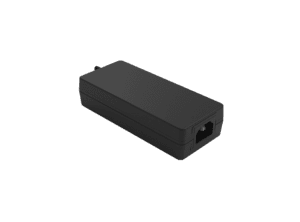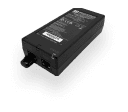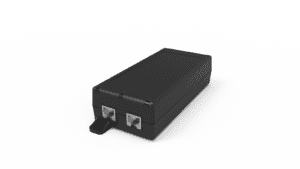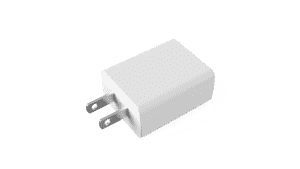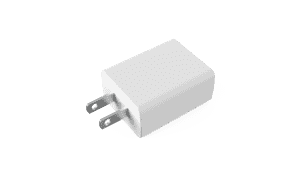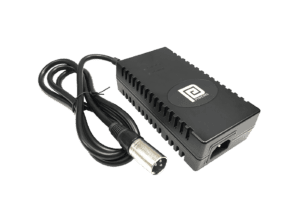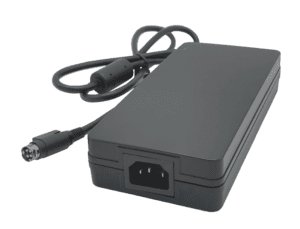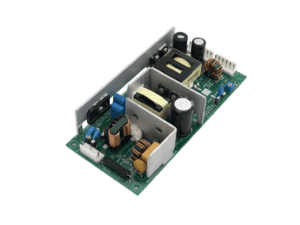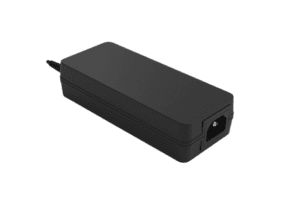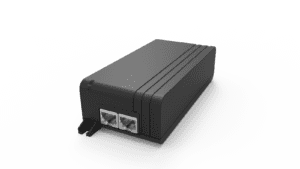BLOG
PoE Network vs Traditional Data Networks: The Differences and Benefits
Table of contents
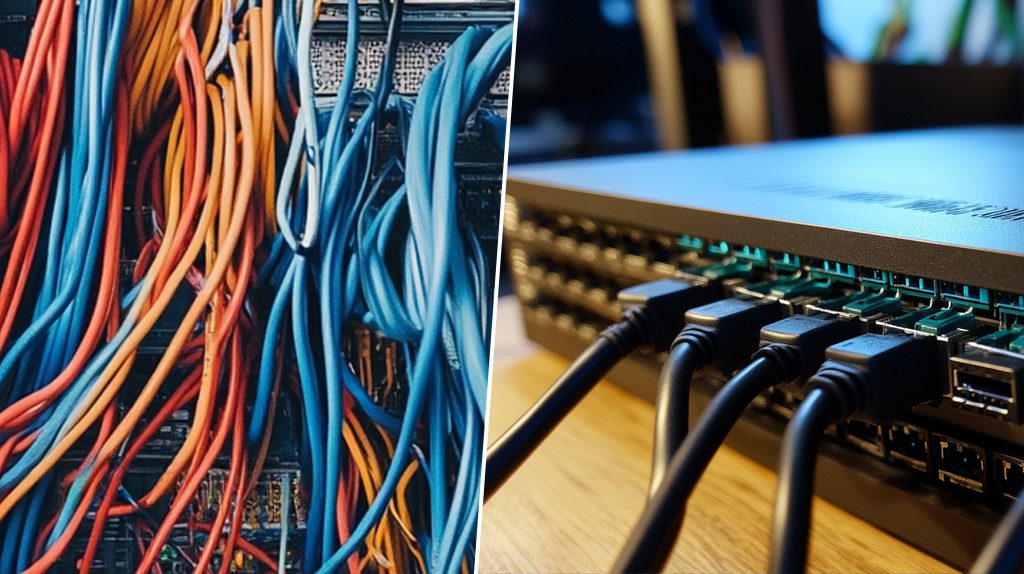
In the evolving landscape of network infrastructure, businesses are continually seeking efficient, scalable, and cost-effective solutions to power and connect their devices. Power over Ethernet (PoE) has emerged as a game-changing technology, offering a streamlined approach to delivering power and data through a single cable. This innovative solution stands in stark contrast to traditional data networks, which rely on separate cabling systems for power and data transmission.
For OEMs and businesses seeking efficiency and optimization, understanding the differences between PoE networks and traditional data networks is crucial. This insight enables informed decision-making and enhances the ability to deliver superior products to clients. In this article, we explore the key distinctions and advantages of PoE networks over traditional data networks, providing a comprehensive guide for businesses looking to leverage cutting-edge technology.
What is Power over Ethernet (PoE) and How Does It Work?
Power over Ethernet (PoE) is a technology that enables the delivery of electrical power and data over a single Ethernet cable. This setup eliminates the need for separate power cables and outlets, simplifying the installation process and reducing overall costs. PoE is particularly beneficial in environments where deploying power sources is challenging, such as industrial settings or remote locations.
Key Differences
PoE Networks: Utilize a single cable for power and data, reducing complexity and cost. PoE networks leverage Ethernet cables to deliver both power and data, which simplifies the network design significantly. This means fewer cables are required, reducing installation time and cost. Furthermore, PoE is inherently flexible, allowing for easy expansion and reconfiguration of network devices without needing additional power infrastructure.
Traditional Networks: Require separate power and data cables, leading to more complicated installations and higher costs. Traditional data networks necessitate two separate systems—one for power and one for data. This results in a more complex installation process, with additional cables and outlets required for each device. This not only increases material and labor costs but also makes future expansions and maintenance more cumbersome and expensive.
Other Features and Benefits
- Cost Efficiency: By combining power and data in a single cable, PoE reduces material and labor costs, making it a cost-effective solution for large-scale deployments. This efficiency is particularly beneficial in expansive environments like manufacturing plants or office buildings where cabling costs can quickly add up.
- Safety and Reliability: PoE systems often include built-in safety features such as overload protection, voltage monitoring and power management, ensuring reliable and safe operation. These features help prevent electrical faults and ensure that all connected devices operate within their power limits.
Best Practices
- Assess Power Requirements: Determine the power needs of all connected devices to ensure the network can support the load. This involves understanding the power demands of each device and ensuring that the PoE switches and injectors can supply sufficient power.
- Use Quality Cabling: Invest in high-quality Ethernet cables (Cat5e, Cat6, or higher) to ensure reliable performance. Higher quality cables provide better power delivery and data transmission, reducing the risk of signal loss or degradation.
- Implement Management Tools: Utilize network management tools to monitor power consumption and device status. These tools can help identify potential issues before they become major problems, ensuring the network remains reliable and efficient.
- Plan for Expansion: Design the network with future growth in mind, selecting PoE switches with sufficient capacity. Consider the potential for additional devices and ensure that the network can accommodate them without requiring major upgrades.
- Ensure Proper Grounding: Proper grounding prevents electrical shocks and interference, ensuring network stability. This is particularly important in environments with significant electrical equipment, where grounding can help prevent interference and protect devices.
Comparing PoE Networks to Traditional Data Networks
Traditional data networks use separate cables for power and data transmission. This means that each device requires its own power source and outlet, leading to more complex cabling and higher installation costs. In contrast, PoE networks deliver both power and data through a single Ethernet cable, simplifying the network infrastructure and reducing costs.
Key Differences
PoE Networks: Simplify installation and maintenance by reducing the amount of cabling required. The integration of power and data into a single cable streamlines the entire setup process. This not only reduces the initial costs associated with cable purchase and installation but also makes future maintenance and troubleshooting much simpler and less time-consuming.
Traditional Networks: Involve more complex cabling and higher installation and maintenance costs. Each device requires separate power and data cables, which increases the physical infrastructure needed and the labor involved in installation and maintenance. This setup can become particularly cumbersome in large-scale deployments, where the sheer volume of cables can lead to significant management challenges.
Top Features and Benefits
- Reduced Cabling: PoE networks require fewer cables, simplifying installation and reducing clutter. This streamlined approach not only saves space but also makes it easier to manage and organize the network infrastructure.
- Lower Costs: By eliminating the need for separate power cables and outlets, PoE networks lower both material and labor costs. This makes PoE an attractive option for businesses looking to reduce their capital expenditures on network installations.
- Easier Maintenance: With fewer cables to manage, PoE networks are easier to maintain and troubleshoot. This simplicity translates to less downtime and reduced costs associated with network repairs and upgrades.
- Greater Flexibility: PoE networks can easily accommodate new devices without the need for additional power infrastructure. This makes it easy to scale the network as needed, whether adding new workstations, IP cameras, or other networked devices.
Best Practices
- Evaluate Network Needs: Understand the specific requirements of your network to determine if PoE is the right solution. Consider the types of devices that will be connected and their power and data needs.
- Optimize Network Layout: Design the network layout to maximize the benefits of PoE, such as reduced cabling and easier maintenance. Plan the placement of PoE switches and injectors to ensure efficient power distribution.
- Monitor Performance: Regularly monitor network performance to ensure that all devices are receiving adequate power and data. Use network management tools to keep track of power consumption and device status, and to identify any potential issues early.
The Cost Benefits of Implementing PoE Networks
Implementing a PoE network can lead to significant cost savings. By combining power and data transmission into a single cable, PoE reduces the need for additional cabling and power infrastructure. This results in lower material and labor costs, making PoE a cost-effective solution for large-scale deployments.
Key Differences
PoE Networks: Achieve substantial cost savings by minimizing material, installation, and maintenance expenses. Eliminating the need for extra power cables not only reduces clutter and confusion but also decreases material costs. There’s no need for additional fees to hire an electrician; an IT technician can easily set up a PoE network, even in large-scale implementations. Moreover, the streamlined network infrastructure leads to lower ongoing maintenance and operational costs.
Traditional Networks: Higher costs due to the need for separate power infrastructure and more complex installations. The requirement for separate power and data cables increases the amount of cabling needed, which in turn increases material and labor costs. The complexity of the installation also means higher costs for future maintenance and upgrades, as each new device added to the network requires additional power infrastructure.
Best Practices
- Conduct a Cost Analysis: Compare the costs of implementing a PoE network versus a traditional network to determine potential savings. Take into account not only the initial installation costs but also long-term maintenance and operational costs.
- Plan for Future Growth: Design the network with future expansion in mind to maximize cost savings. Ensure that the infrastructure can support additional devices without requiring significant upgrades.
- Invest in Quality Equipment: Use high-quality PoE injectors and cabling to ensure long-term cost savings. While the initial investment may be higher, the reliability and performance of quality equipment will save money in the long run.
- Monitor Power Usage: Regularly monitor power usage to optimize network efficiency and reduce costs. Efficient power management can help prevent overloading and ensure that all devices receive the power they need.
CLIENT'S QUOTE
Phihong's Power-Over-Ethernet solutions have transformed our network, boosting efficiency and reducing costs. Their seamless integration has simplified both installation and maintenance.
How PoE Enhances Network Flexibility and Scalability
One of the key advantages of PoE is its ability to enhance network flexibility and scalability. PoE allows for easy reconfiguration and expansion of network devices without the need for additional power infrastructure. This makes PoE an ideal solution for dynamic environments such as manufacturing floors, where devices may need to be moved or added frequently.
Key Differences
PoE Networks: Offer greater flexibility and scalability by allowing easy expansion and reconfiguration of network devices. The ability to deliver both power and data through a single cable means that devices can be added or moved with minimal disruption. This flexibility is particularly beneficial in environments where network requirements frequently change, such as in industrial settings or large office buildings.
Traditional Networks: Limited flexibility and scalability due to the need for additional power infrastructure for each new device. Adding new devices to a traditional network requires separate power sources, which can be both costly and time-consuming. This makes traditional networks less adaptable to changes and expansions.
Top Features and Benefits
- Easy Expansion: PoE networks can accommodate new devices without the need for additional power sources, making it easy to expand the network. This is particularly beneficial in growing businesses that need to scale their network infrastructure quickly and efficiently.
- Easily Replaceable: When it comes to PoE injectors, one can be easily replaced without having to replace an entire network switch. This means reduced downtime and maintenance costs, as individual injectors can be swapped out quickly and efficiently, ensuring minimal disruption to your network.
- Flexible Deployment: PoE allows for the deployment of devices in locations where power outlets are not available, increasing network flexibility. This makes it possible to install devices in hard-to-reach areas or in locations where adding power infrastructure would be impractical.
- Simplified Reconfiguration: Devices can be easily moved and reconfigured without the need for additional power cabling, simplifying network changes. This flexibility is crucial for environments that require frequent reconfigurations, such as manufacturing plants or dynamic office spaces.
- Scalable Solutions: PoE networks can be easily scaled to accommodate growing network needs, making it a versatile solution for businesses. This scalability ensures that the network can grow with the business, without requiring significant investments in additional power infrastructure.
Ensuring Reliability and Safety in PoE Networks
Reliability and safety are critical considerations when implementing a PoE network. PoE systems often include built-in safety features such as overload protection and power management, ensuring reliable and safe operation. By following best practices, businesses can ensure that their PoE networks are both reliable and safe.
Key Differences
PoE Networks: Include built-in safety features and enhanced reliability through integrated power and data delivery. PoE systems are designed with safety in mind, incorporating features like overload protection and power management to prevent electrical faults and ensure reliable operation. These features help protect both the network and connected devices from potential damage.
Traditional Networks: Separate power systems can introduce risks of overloading and electrical faults if not properly managed. Traditional networks rely on separate power infrastructure, which can increase the risk of electrical faults and overloading if not properly managed. This can lead to network downtime and potential damage to devices.
Top Features and Benefits
- Built-In Safety Features: PoE systems often include features such as overload protection and power management to ensure safe operation. These features help prevent electrical faults and protect devices from damage, ensuring reliable and safe network operation.
- Enhanced Reliability: PoE networks are designed to provide reliable power and data transmission, reducing the risk of network failures. By integrating power and data into a single cable, PoE reduces the potential for interference and signal loss, ensuring consistent performance.
- Improved Performance: By delivering power and data through a single cable, PoE networks reduce the risk of interference and improve overall network performance. This results in faster data transmission speeds and more reliable network connections.
- Compliance with Standards: PoE systems adhere to industry standards, ensuring compatibility and safe operation. This compliance ensures that PoE devices can operate together seamlessly and that the network meets industry safety and performance standards.

Contact Our Team Today!
Our dedicated sales team and international partners are prepared to support you with your latest projects and initiatives globally.
Explore More with Phihong USA
As we conclude our exploration of PoE technology, it’s clear that this field is experiencing unprecedented growth. For over 50 years, Phihong has been at the forefront of innovation, serving Fortune 500 companies across various industries as a leading power supply manufacturer for OEMs.
Phihong’s leadership, particularly in advanced technologies like Power over Ethernet, extends to active contributions in the development of IEEE PoE standards. This involvement underscores our commitment to innovation and dedication to providing cutting-edge power solutions that will shape the future of technology.
In addition to custom power supply solutions, Phihong offers a diverse range of products, including:
- Power over Ethernet (PoE) Solutions: PoE injectors, splitters, media converters, and more
- AC/DC Adapters and Power Supplies: USB adapters, desktop adapters, industrial-grade power supplies, and more
- Battery Chargers: Chargers for lithium-ion and lead-acid batteries
- Medical Power Supplies: Specialized power supplies that meet stringent healthcare requirements
By partnering with Phihong USA, you are choosing a trailblazer in power technology. If you’re an OEM looking for a custom PoE solution or just looking for a quality product, call us today: 510-445-0100 or email us at usasales@phihongusa.com. We look forward to collaborating with you.
FAQ
What are the key differences between PoE and traditional data networks? The main difference between PoE and traditional data networks lies in the way power and data are delivered. PoE networks use a single Ethernet cable to transmit both power and data, while traditional networks require separate cables for each. This distinction leads to several benefits for PoE, including simplified installation, reduced costs, and increased flexibility. Traditional networks, on the other hand, involve more complex cabling and higher installation and maintenance costs. Understanding these differences is crucial for businesses looking to optimize their network infrastructure and improve efficiency.
How does PoE simplify network installation and maintenance? PoE simplifies network installation and maintenance by combining power and data transmission into a single cable. This reduces the amount of cabling required, minimizes installation time, and lowers overall costs. Additionally, PoE networks are easier to maintain as there are fewer cables to manage, and the integrated power delivery eliminates the need for separate power outlets. This streamlined approach is particularly beneficial in environments where deploying power sources is challenging, such as industrial settings or remote locations.
What are the cost benefits of implementing a PoE network? Implementing a PoE network offers several cost benefits. By eliminating the need for separate power cables and outlets, PoE reduces material and labor costs. This is especially advantageous in large-scale deployments where the cost savings can be substantial. Additionally, PoE networks are more flexible and scalable, allowing for easy expansion and reconfiguration without the need for additional power infrastructure. This cost efficiency makes PoE an attractive option for businesses looking to optimize their network setup and reduce expenses.
Why is PoE considered more flexible and scalable than traditional networks? PoE is considered more flexible and scalable than traditional networks because it allows for easy expansion and reconfiguration of network devices without the need for additional power infrastructure. This flexibility is ideal for dynamic environments such as manufacturing floors, where devices may need to be moved or added frequently. Traditional networks, on the other hand, require additional power sources and cabling for each new device, limiting their scalability and flexibility. PoE’s ability to deliver both power and data over a single cable makes it a versatile and adaptable solution for modern network infrastructure.
What best practices should be followed when implementing a PoE network? When implementing a PoE network, it is important to follow best practices to ensure optimal performance and reliability. First, assess the power requirements of all connected devices to ensure the network can support the necessary power load. Use high-quality Ethernet cables (Cat5e, Cat6, or higher) to ensure reliable data transmission and power delivery. Implement network management tools to monitor and manage PoE devices, providing insights into power consumption, device status, and network performance. Plan for future expansion by selecting PoE switches with sufficient port capacity and ensuring the infrastructure can support additional devices. Finally, ensure proper grounding to prevent electrical shocks, reduce electromagnetic interference, and ensure stable power delivery.

